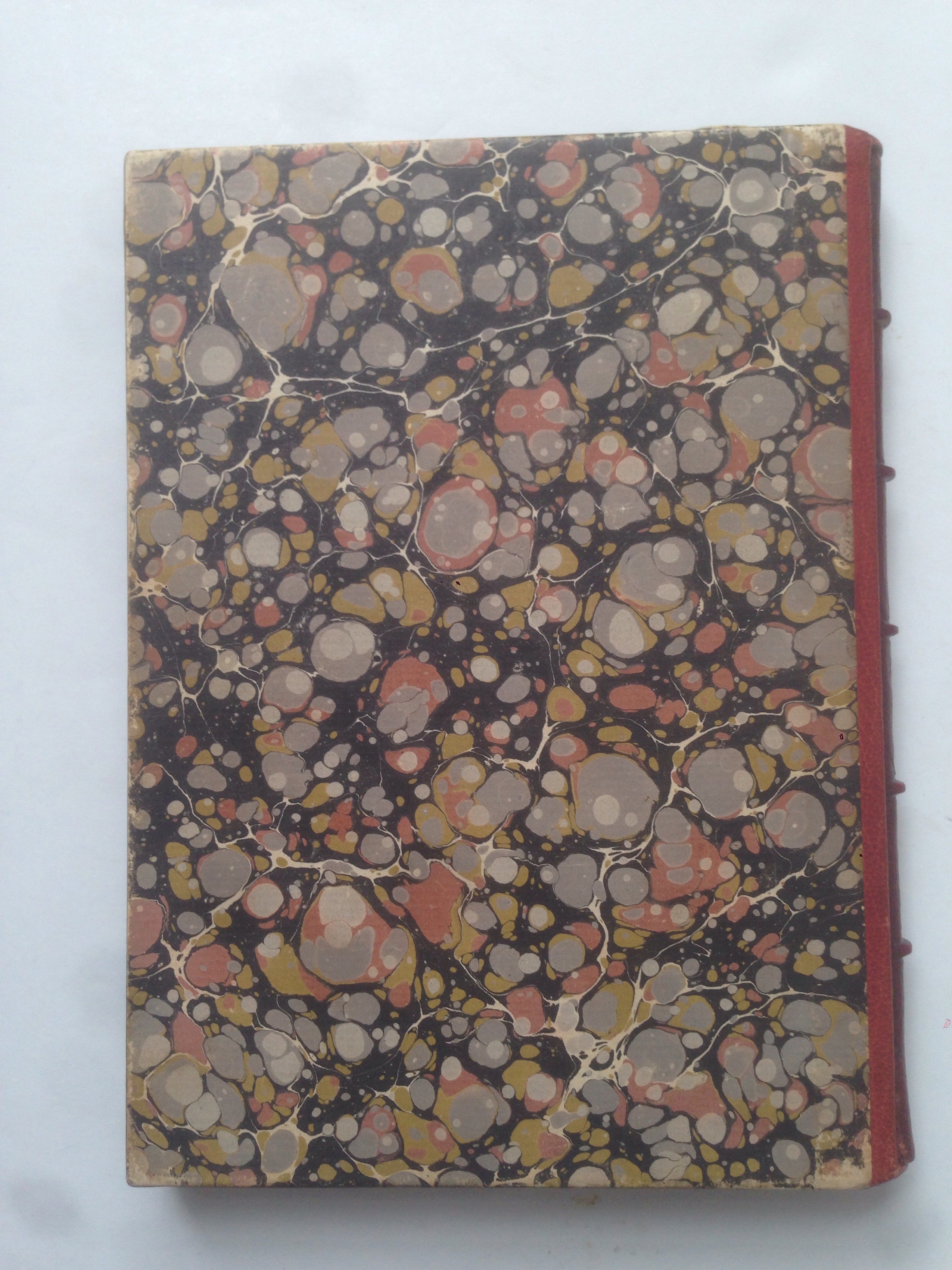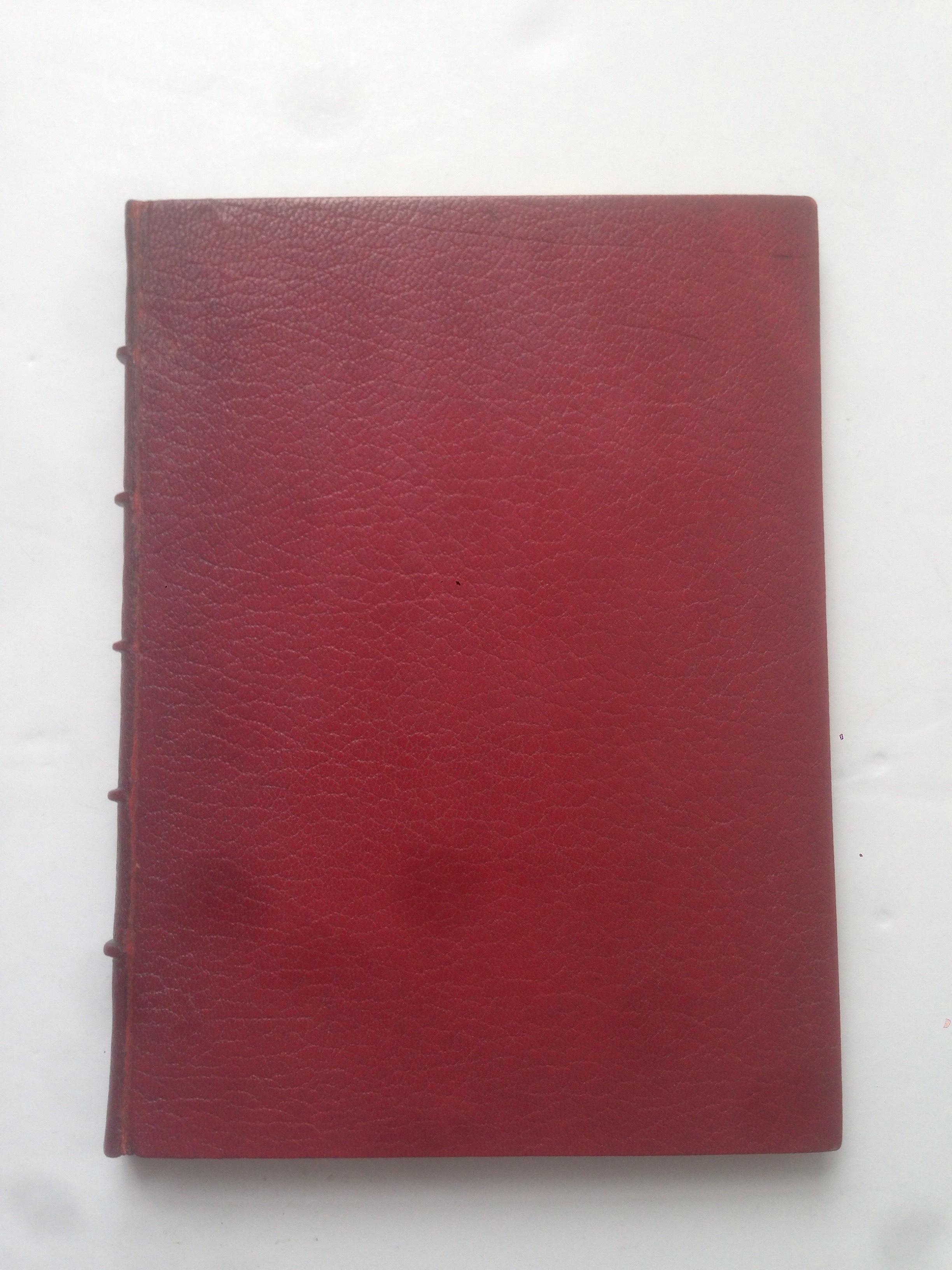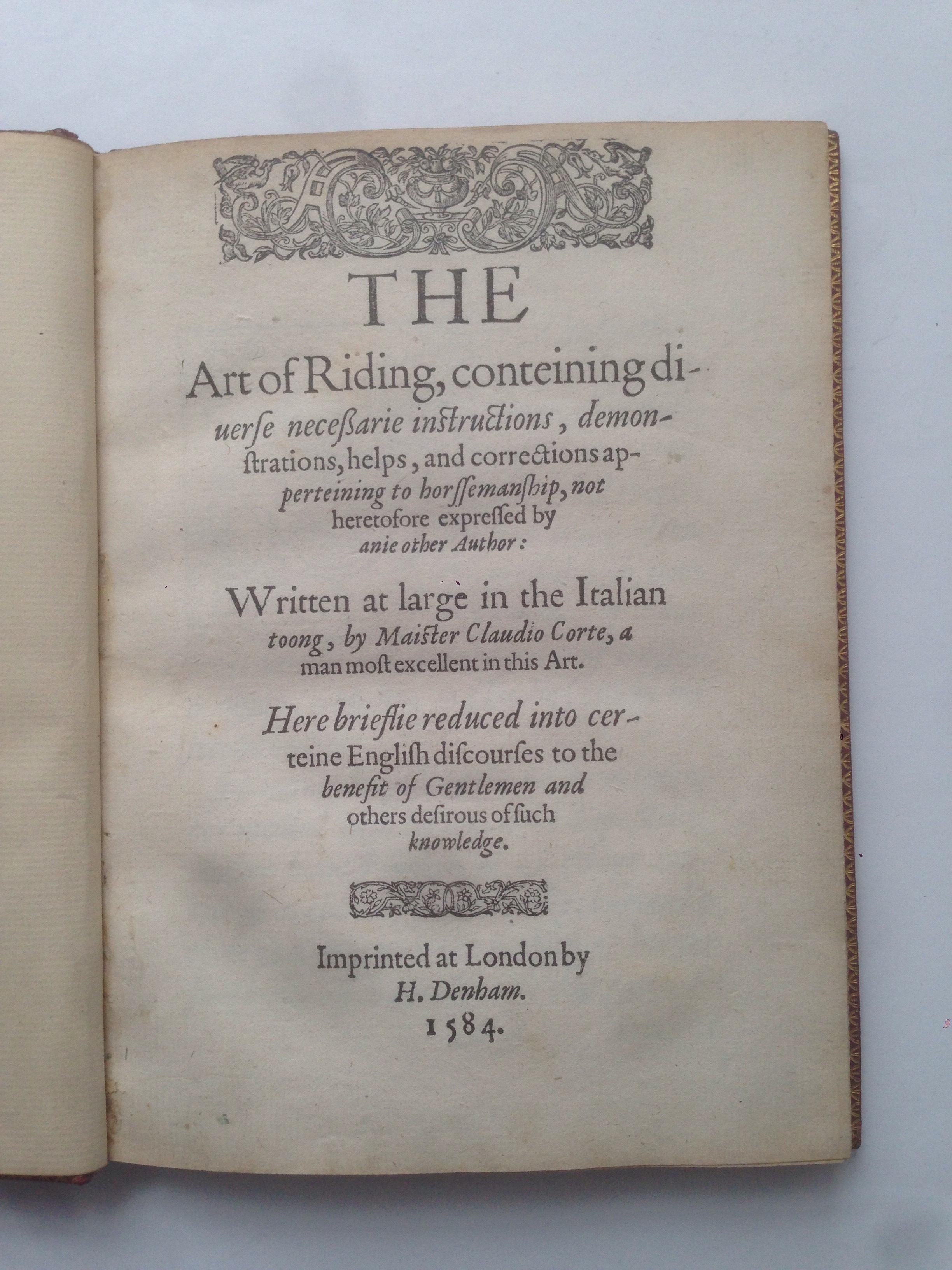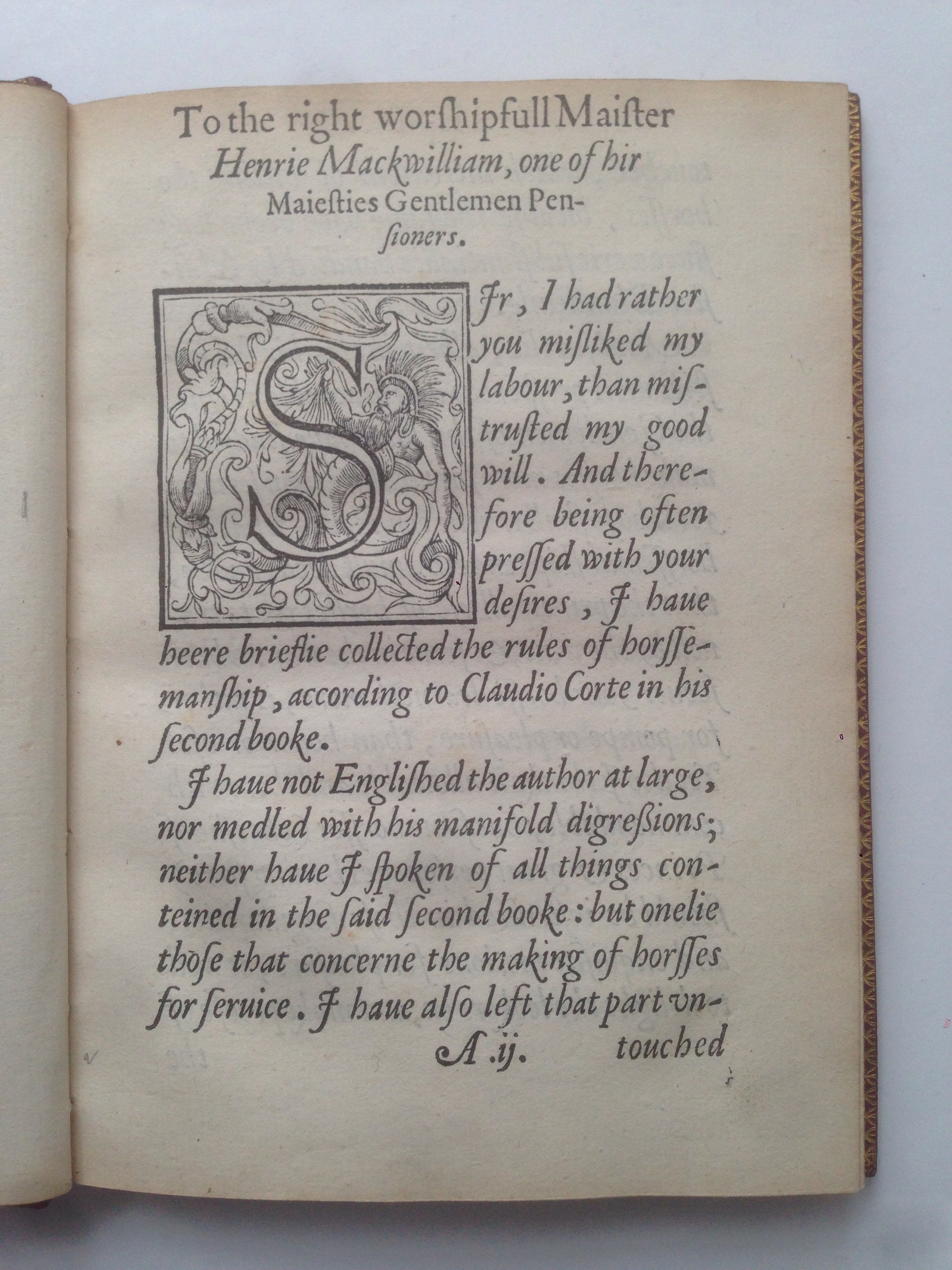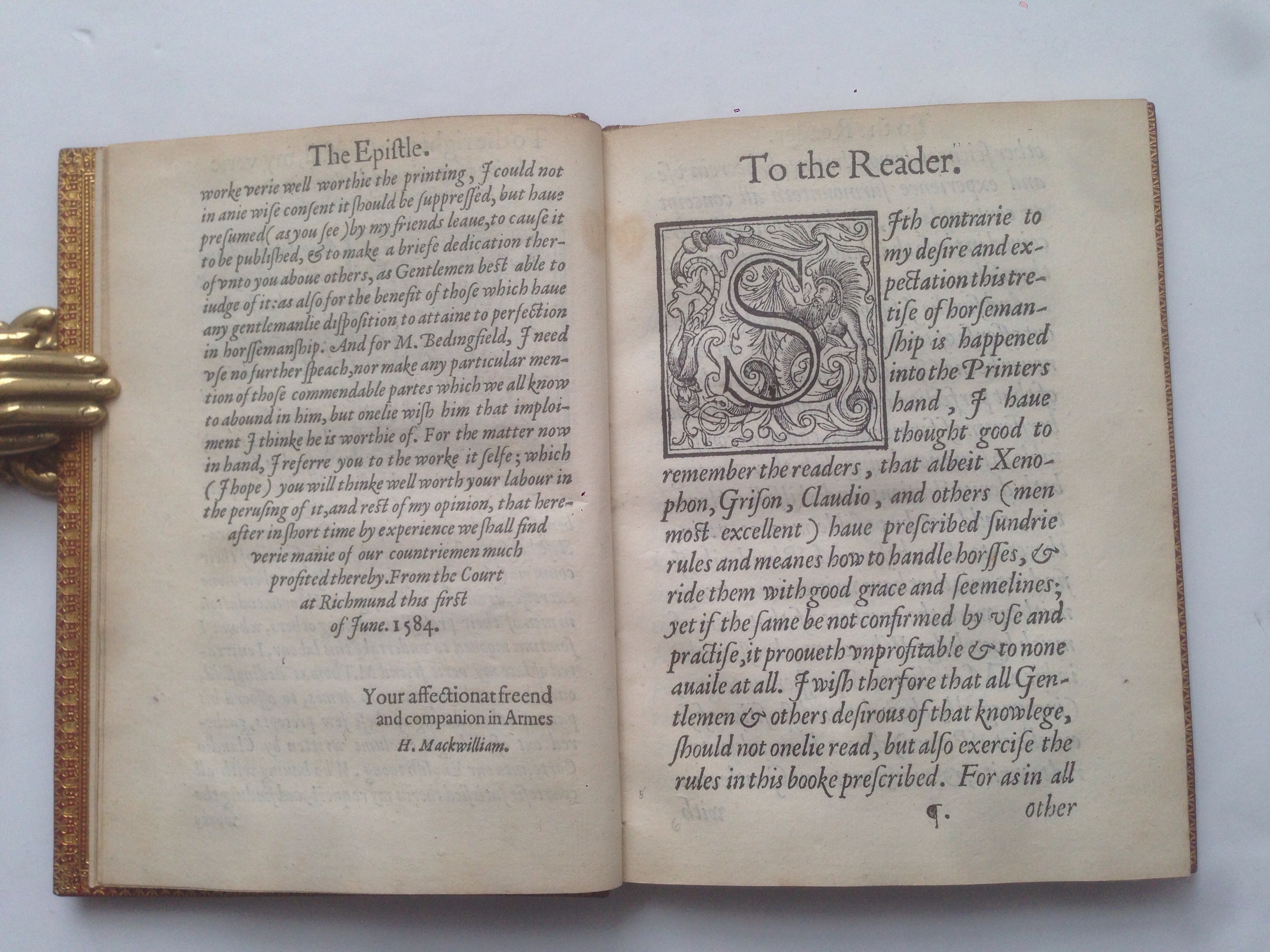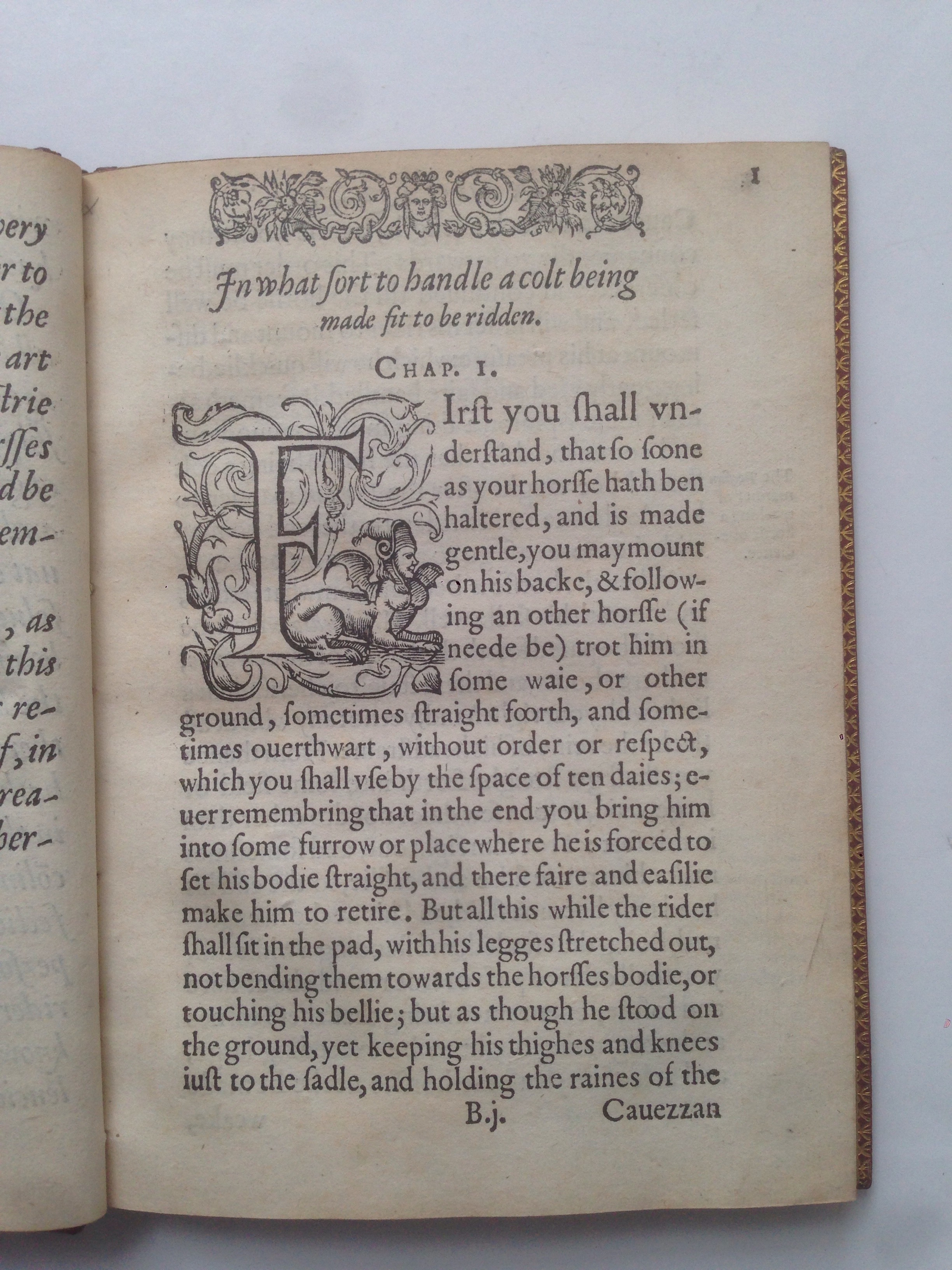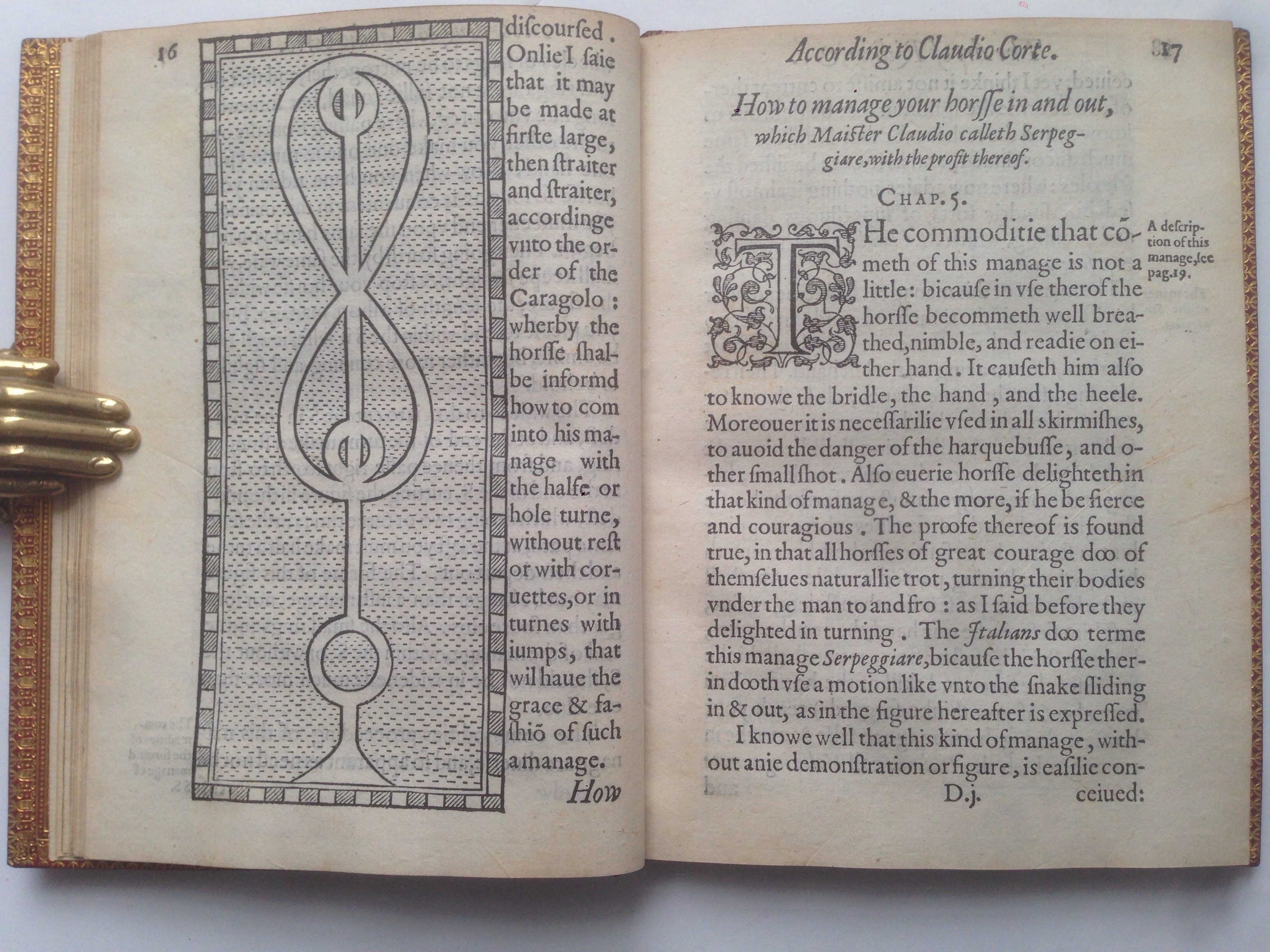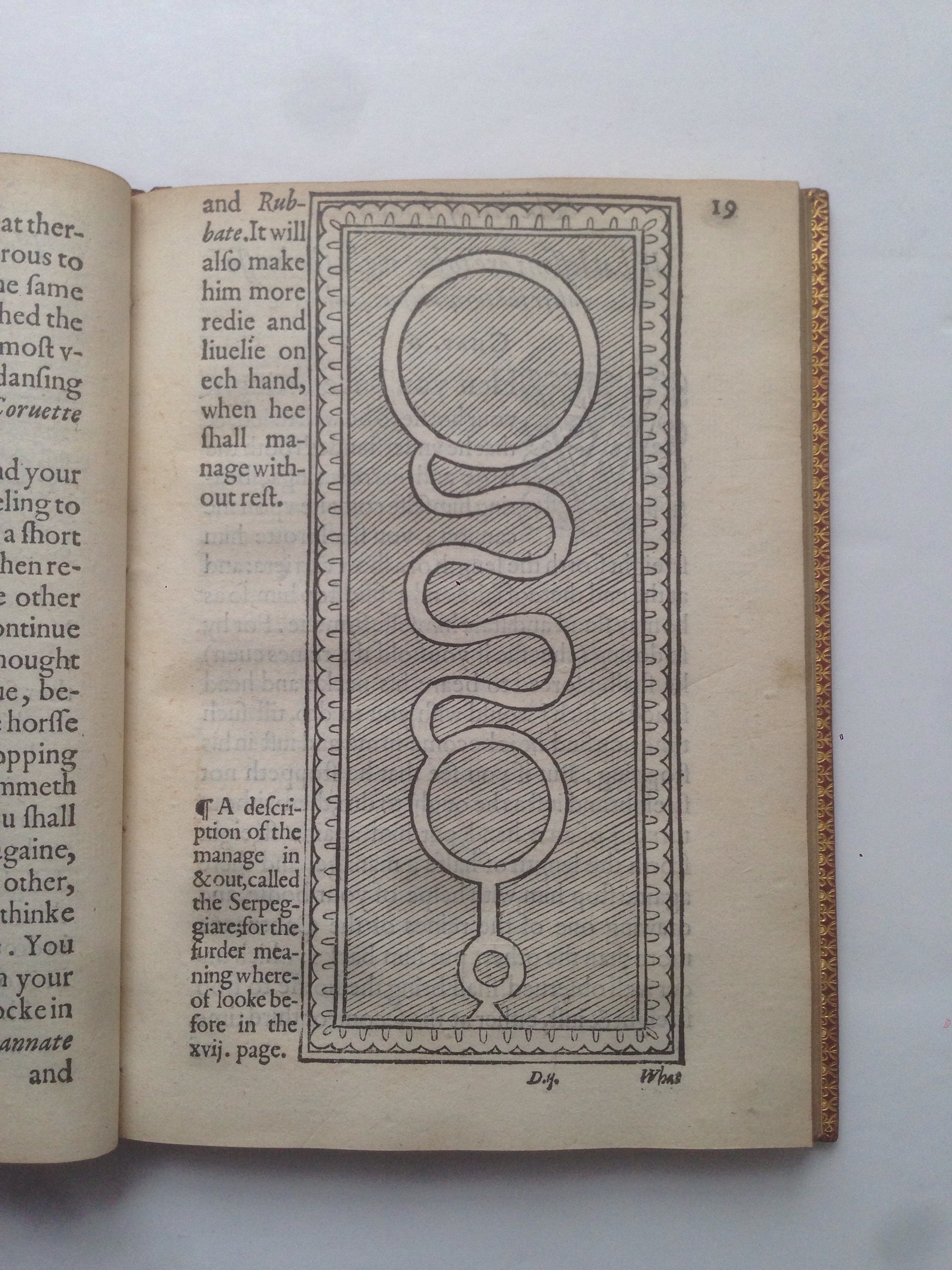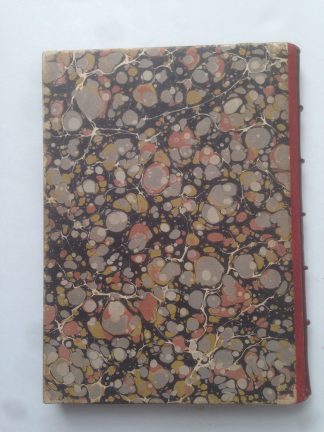CORTE, Claudio
The art of riding, conteining diuerse necessarie instructions
London, By H. Denham, 1584£17,500.00
FIRST EDITION. 4to. pp. [xii], 112. A , [par.]², B-P . Roman letter, some Italic. Small woodcut ornaments on t-p, large grotesque incipit initials, floriated woodcut initials in text, five woodcut diagrams, two full page. Light age yellowing, last leaf a little dusty, A very good copy, crisp and clean, in C19 crimson morocco by Riviere, inner dentelles richly gilt, joints expertly restored, all edges gilt, spine a little darkened, in slipcase.
Rare first edition of one of the most important and influential equestrian treatises of C16th England, a partial translation of of Claudio Corte’s Il Cavalerizzo. The work is of particular interest as it takes from Corte what is essential for the English rider. As the translator, Thomas Bedingfield, states in his preface – “I haue heere brieflie collected the rules of horssemanship, according to Claudio Corte in his second booke. I haue not Englished the author at large, nor medled with his manifold digressions; neither haue I spoken of all things conteined in the said second booke: but onelie those that concerne the making of horsses for seruice. I haue also left that part vntouched, which intreateth of bitting the horsses, bicause the same hath beene long since verie substantiallie handled by Maister Blundeuile.” During the 16th century, riding evolved from its martial origins into an art form practiced by noblemen and kings. Instead of the medieval jousts and melees, horsemen began to display their skills in carousels, ballets, and individual performances, and riding masters, included in their riding manuals, instructions essential to the comportment of the horse and rider, as well as an overview of the figures used in the 16th century menage. “By the time of Elizabeth I’s reign, not only had the manège become an actively promoted component of a young courtiers education, but the art had entered into a veritable golden age exemplified by widespread practice and the marked increase in horsemanship manuals (including ) Thomas Bedingfields ‘The art of Riding by Claudio Corte’” Monica Mattfeld. ‘Becoming Centaur: Eighteenth-Century Masculinity and English Horsemanship.’ “(The Earl of) Leicester, as master of the horse from 1559 to 1581, imported foreign strains to improve native horse-breeding, and brought the Italian Claudio Corte to England, to train and exercise horses ‘for skirmish, for battell and for combate [which] standeth him in steed for the exercise of the turnie and all other feates of arms.’ Corte’s ‘Art of riding’ was published .. with John Astly’s Art of Riding in 1584.” Sue Simpson. “Sir Henry Lee (1533–1611): Elizabethan Courtier.”.
“From the point of view of horse training techniques during the Renaissance, the two fundamental texts of the sixteenth century are ‘Gli ordini di cavalcare’ (The orders of riding, 1550) by Federico Grisone, a manual for the training of the horse “to the use of war,” and Il cavallarizzo (The Horseman, 1562) by Claudio Corte, one of the most refined and innovative works among those devoted to the equestrian art in the sixteenth century. Compared to Grisone’s book, the work of Claudio Corte introduces various other training exercises, the most part of which are still used today, even if with slight differences. Clearly, these were not invented by Corte, but he had the merit to explain them in his treatise, consolidating their use. According to Corte, the starting point of the training is the work on circles. Therefore, he proposed an updated scheme of Grisone’s “torni”, which he calls “rote” (“wheels”). The difference between the two exercises is that, after covering the straight line, the horse had to turn on three contiguous circles with a diameter of 8-12 meters(26-39 feet), then he had to come back on the same straight path, after which he had to turn on three smaller circles. Another innovative exercise is what Corte called the tight S. It was a path in the form of a figure eight, from which the rider comes up with a ‘repolone’, stopping the horse on the straight line.Finally, the last exercise introduced by Corte was what he called “to snake”, i.e. the serpentine. Corte was also the first author to mention the use of the work in-hand, with the rider on the ground who guides the horse with the reins. Over time, this way of training the horse would subsequently have a remarkable development, being used to teach the horse the different exercises of dressage without the hindrance of the weight of the rider.” Giovanni Battista Tomassini. “The Italian Tradition of Equestrian Art”.
A very good copy of this extremely rare, important and influential work.
ESTC S100322. STC 5797. Mellon/Podeschi 11. Luborsky & Ingram. English illustrated books, 1536-1603, 5797.In stock


